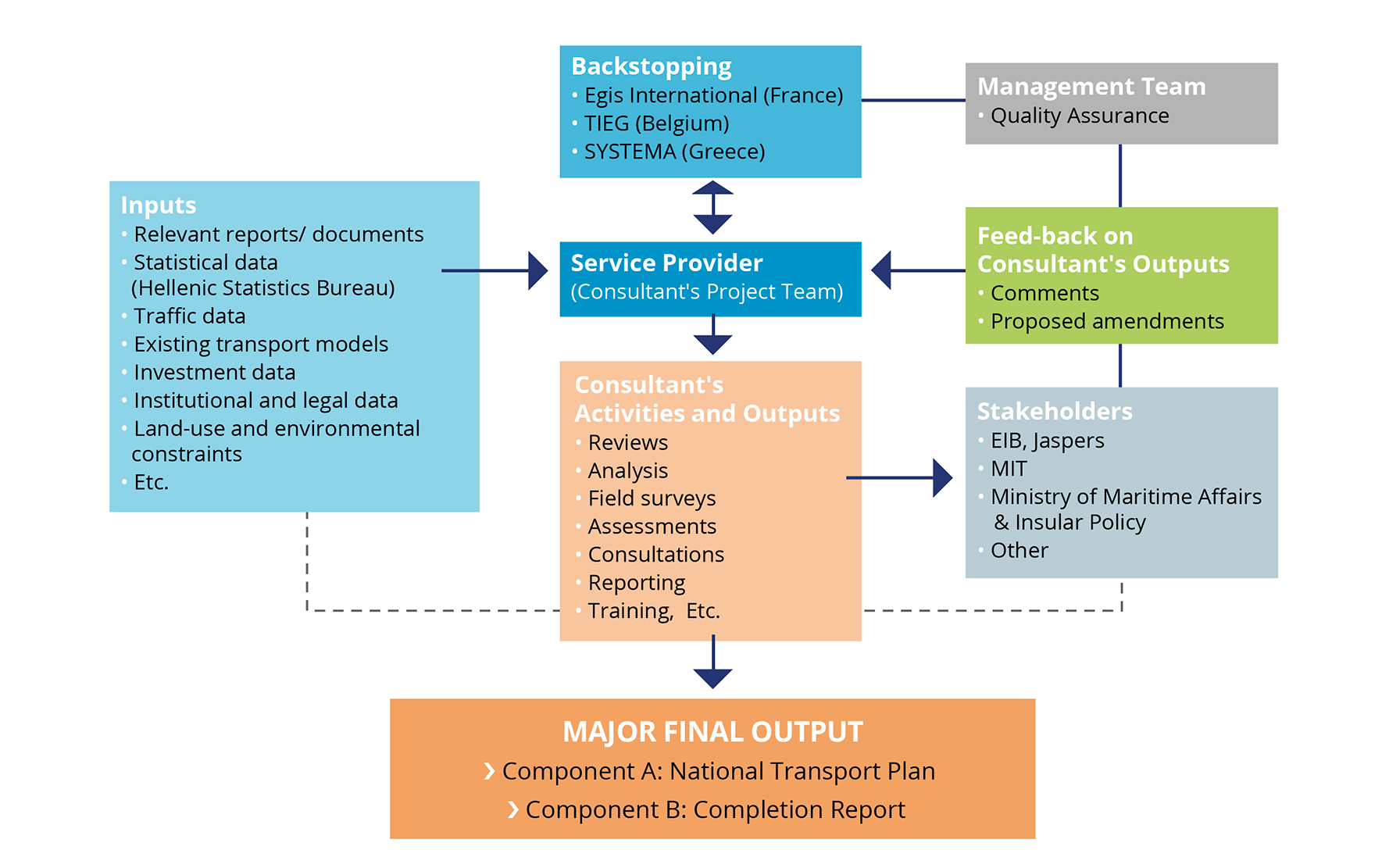Scope of Services
Outline of the overall assignment approach
The Service Provider’s overall approach is based upon the close interrelations between the main players, their respective roles and their intertwined involvement with items such as various inputs and outputs, provision of back-up, advice and comments, quality control and logistics.
An iterative method is applied all along the project duration, as the project advances. Such an approach is likely to ensure that proper inputs are utilised and that the produced outputs satisfy the ToR requirements. Thus the project can advance from one stage to another, avoiding the need to review the work done in earlier stages.
This approach is illustrated in the following figure.

Project Components
The Terms of Reference foresee two distinct components that together will support in developing the tools, capacity and processes to undertake activities in Strategic Transport Planning to support in the future planning of investments and policies in the transport sector, in addition to providing a central source of transport-related outputs to other public institutions. These components comprise:
- Component A (Tasks 1-9): The preparation of a comprehensive National Transport Plan with developed measures based on solid data collection and analysis of the needs of the whole transport sector, supported by a Strategic Environmental Assessment (SEA) and Appropriate Assessment (AA). This incorporates the development of a National Transport Model covering all transport modes and capable of being used as a decision support tool for future policy making, investment planning and project preparation; and
- Component B (Tasks 10-12): The development of a management structure and data management plan for the Strategic Planning Unit of the Ministry, describing activities, staffing, and protocols for future information flow between the Unit and external agencies/authorities.
Activities related to main components A and B will be conducted in parallel taking cognizance of the relevant interrelations between them. The relationships between the tasks and the expected main outputs are illustrated in the following flow-chart figure.
Flow-chart of proposed tasks and main outputs
Click to see a flow-chart figure of all the tasks and expected main outputs of each component.



